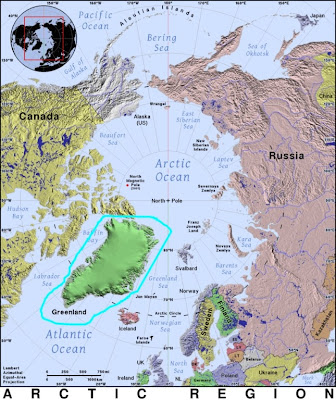Another Grand Canyon?
Another canyon has been discovered. It's longer than the Grand Canyon, but not as deep. This canyon is under the ice of Greenland, so it took the advanced technology (including radar, which mapped cloud-shrouded planet Venus) of NASA's "Operation Icebridge" to find it.
The existence of this huge canyon under the ice defies geological assumptions about the age of the Earth and ice ages. Instead, it may very well be a source of information for young Earth creationists.
The existence of this huge canyon under the ice defies geological assumptions about the age of the Earth and ice ages. Instead, it may very well be a source of information for young Earth creationists.
Take some time to chill out and read the rest of "Grand Canyon Demoted by New Discovery".A canyon longer than Grand Canyon has been discovered under the ice of Greenland. Scientists are surprised that it has persisted through the ice ages.Science Magazine announced the discovery of a giant “mega-canyon” in bedrock under Greenland’s ice pack by airborne radar in NASA’s Operation IceBridge. TheBBC News includes a radar map of the canyon, and a video explaining the significance of the never-before-seen feature.It’s less than half as deep as the Grand Canyon (800 m) but over twice as long (800 km), and comparably wide. Live Science is calling it the “world’s longest canyon.” It flows from the center of the island northward to the sea, entering the sea below sea level. National Geographic also reported the discovery.When did it form? Geologists believe it is “paleofluvial,” meaning it formed as a river system before the ice sheets covered the surface. But that creates a mystery; why didn’t glaciers smooth it out and obliterate it? “Indeed, none of the profiles are typical of glacially eroded valleys,” the paper states. “…The canyon follows a meandering path more typical of a large river system.”
